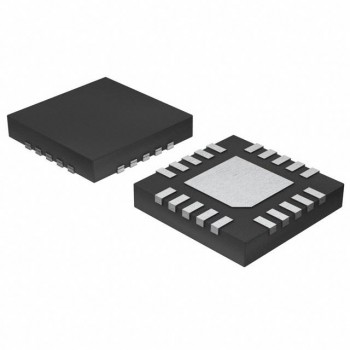Communication chips, also known as communication integrated circuits (ICs), are essential components in modern electronic devices that enable communication between different devices or systems. These chips play a crucial role in enabling the exchange of data, voice, and video signals in various electronic devices, such as smartphones, computers, and networking equipment. In this article, we will provide a brief overview of communication chips, their types, functions, and applications.

Types of Communication Chips
There are various types of communication chips designed to perform specific functions in electronic devices. Some of the most common types include:
1. Modem Chips: Modem chips are used to modulate and demodulate signals for transmitting data over communication channels. They are commonly used in devices such as smartphones, routers, and modems.
2. Bluetooth Chips: Bluetooth chips enable wireless communication between devices over short distances. They are commonly used in devices such as smartphones, smartwatches, and wireless headphones.
3. Wi-Fi Chips: Wi-Fi chips enable wireless communication between devices over longer distances. They are commonly used in devices such as laptops, tablets, and smart home devices.
4. Ethernet Chips: Ethernet chips enable wired communication between devices over local area networks (LANs). They are commonly used in devices such as computers, routers, and switches.
5. Cellular Chips: Cellular chips enable communication over cellular networks for mobile devices such as smartphones and tablets.
Functions of Communication Chips
Communication chips perform several important functions to enable communication between devices. Some of the key functions include:
1. Signal Processing: Communication chips process incoming and outgoing signals to modulate, demodulate, encode, decode, and compress data for transmission over communication channels.
2. Data Transmission: Communication chips facilitate the transmission of data, voice, and video signals between devices using various communication protocols such as Bluetooth, Wi-Fi, Ethernet, and cellular networks.
3. Error Correction: Communication chips incorporate error correction mechanisms to ensure the accuracy and reliability of transmitted data by detecting and correcting errors in the communication process.
4. Security: Communication chips implement encryption and authentication mechanisms to secure communication channels and protect data from unauthorized access and interception.
Applications of Communication Chips
Communication chips are widely used in a variety of electronic devices and systems across different industries. Some of the common applications include:
1. Consumer Electronics: Communication chips are used in smartphones, tablets, laptops, smart TVs, and smart home devices to enable wireless and wired communication between devices.
2. Networking Equipment: Communication chips are used in routers, switches, and access points to enable communication over wired and wireless networks.
3. Industrial Automation: Communication chips are used in industrial control systems, sensors, and actuators to enable communication and data exchange in manufacturing and automation processes.
4. Automotive: Communication chips are used in vehicles for in-car communication, infotainment systems, and telematics to enable connectivity and communication between different vehicle components and external systems.
5. Telecommunications: Communication chips are used in telecommunications equipment such as base stations, repeaters, and gateways to enable communication over cellular and wireless networks.
In conclusion, communication chips are essential components in modern electronic devices that enable communication between devices and systems. They perform various functions such as signal processing, data transmission, error correction, and security to ensure reliable and secure communication. With the advancement of technology, communication chips continue to evolve to meet the growing demand for faster, more reliable, and secure communication in a wide range of applications.

